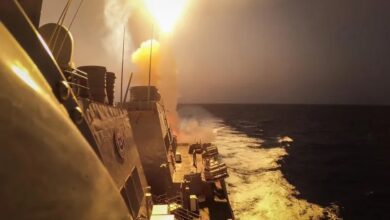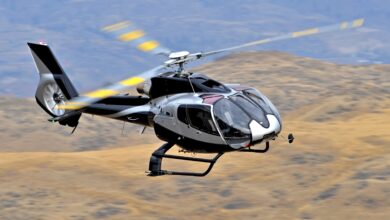Pentagon releases new details of raid that killed ISIS leader Baghdadi
'We don’t see a bloodless future,' CENTCOM commander says after ISIS leader's death
The founder of Islamic State, who once reigned over some eight million people, died in a hole hundreds of miles from the last holdout of his so-called caliphate and largely isolated from his followers, according to new details released by the U.S. Department of Defense.
Baghdadi died in a U.S. special operations raid on a compound in northwest Syria, roughly four miles from the Turkish border, on Saturday. “There were no other ISIS forces in the area, we are completely confident of that,” CENTCOM commander General Kenneth “Frank” McKenzie said on Wednesday, October 30, offering new details on the operation to capture or kill the ISIS leader.
But even as the U.S. withdraws its troops to Syria’s oilfields, the fight against ISIS is still not over.
Baghdadi’s death is expected to be “disruptive” to ISIS leadership, McKenzie said, and it may take time for the group to find a new caliph, but the ISIS brand and its followers “remain dangerous.”
“We suspect they will try some form of retribution attack,” the general said.
Speaking to reporters at the Pentagon on Wednesday, McKenzie offered new details on the raid that has offered the Trump administration a Pyrrhic victory after it exposed its local partner against ISIS, the Syrian Democratic Forces, to an assault by Turkey.
On Saturday, as American forces were executing a withdrawal across Syria, McKenzie gave the order for Special Operations Forces teams in the country to prepare to load into helicopters. Their mission was quietly to pass over Syrian government and Turkey-controlled territory to “capture or kill” the ISIS leader.
Baghdadi was holed up in a compound in an area of Syria ultimately controlled by the al-Qaeda affiliate Huras al-Din, a professed enemy of Islamic State.
His location was determined with the help of an informant tied to the SDF, whose command rebuffed an offer to join the Syrian government of Bashar al-Assad on Wednesday and says it is still working with the Americans on counter-terror operations, despite the White House allowing Turkey’s attack.
“Some of their intelligence was very helpful,” McKenzie said, declining to comment further on the informant, who reports say was a member of Baghdadi’s inner circle.
“We assess that [Baghdadi] was hiding in Idlib province to avoid the intense pressure that had been put on ISIS in other places in Syria,” the general said.
After flying for roughly an hour, the U.S. helicopters approached the compound and began taking ground fire from two locations, McKenzie said.
“These individuals, who we don’t asses were affiliated with Baghdadi, but nonetheless demonstrated hostile intent against U.S. forces, were killed by two airstrike from supporting helicopters,” he said.
As the U.S. assault team approached the compound, calls rang out in Arabic for those inside to “come out peacefully.”
A group of people willingly came out of the compound, the general said, including 11 children.
But five more people inside were killed after they “did not respond to commands in Arabic to surrender,” the general said. Four of them were women.
The CENTCOM commander also offered a clarification, noting that Baghdadi retreated into a tunnel and detonated a suicide vest, killing with him two children – not three – as U.S. officials had previously had assessed. McKenzie said the children believed to be no more than 12 years old.
And the now-famous U.S. Special Operations dog was injured by live electrical wires in the tunnel in which Baghdadi had taken shelter, he said.
McKenzie also stated that Baghdadi’s identity was conclusively determined by comparing his DNA sample from the compound to another collected when the Islamist leader was imprisoned at Camp Bucca in Iraq in 2004.
“Baghdadi’s remains were buried at sea in accordance with the law of armed conflict,” McKenzie said.
Still, the general cautioned, the fight against ISIS is not finished. “We’re under no illusions it’s going to go away just because we killed Baghdadi.”
“Since it’s an ideology, you’re never going to be completely able to stamp it out,” McKenzie said.
“We want to get it to a level where local forces can address and suppress it,” clipping its command networks’ abilities to reach Western cities.
That was an original motivation for the Obama administration’s “by, with and through” strategy: The U.S.-led international Coalition against ISIS sought to arm and train local security forces to fight the ground war so that the Coalition could withdraw cleanly after establishing stability.
But U.S. forces were ordered to stand down as Turkey launched an assault on the SDF earlier this month. The Trump administration then ordered a full withdrawal from northeast Syria, then partially reversed that, facing widespread backlash.
American troops will remain at Syria’s eastern oilfields to prevent the group from reemerging, and to prevent those fields from falling into the hands of the Syrian government and Russia, U.S. officials have said recently. But details of the plan remain unclear.
“We don’t see a bloodless future,” McKenzie predicted on Wednesday.












